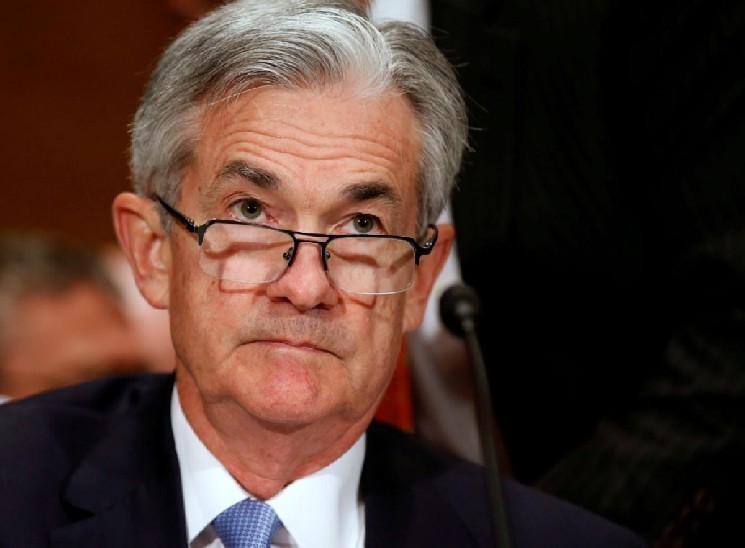Fed Rate Cut Expectations Shift Amid Mixed Economic Signals
Powell’s December Decision Hangs in Balance as Analysts Diverge on Outlook
The possibility of a December interest rate cut by the Federal Reserve remains in flux as analysts and financial institutions present conflicting interpretations of recent economic data. While some market observers continue to anticipate a year-end easing of monetary policy, others have revised their forecasts in light of surprisingly resilient employment figures, creating an atmosphere of heightened uncertainty in financial markets.
Goldman Sachs Maintains December Cut Outlook Despite Mixed Signals
Kay Haigh, managing director at Goldman Sachs Asset Management, remains confident that a December rate cut is still firmly on the table despite recent market volatility. “The combination of softening employment data and inflation approaching the Fed’s target creates a compelling case for action before year’s end,” Haigh noted during a recent market analysis session. This perspective emphasizes the Federal Reserve’s dual mandate of maintaining price stability while supporting maximum employment.
According to Haigh, the current economic landscape presents Federal Reserve Chair Jerome Powell with a strategic opportunity to implement his “risk management approach” to monetary policy before his term concludes in May. This approach, which balances inflation concerns against economic growth considerations, has been a hallmark of Powell’s leadership through unprecedented economic challenges including the pandemic recovery and subsequent inflation surge. The timing takes on additional significance as Powell navigates what could be the final major policy decisions of his current term as Fed Chair.
Morgan Stanley Reverses Course on Rate Cut Prediction
In stark contrast to Goldman’s outlook, Morgan Stanley has recently withdrawn its prediction of a 25 basis point rate cut at the December Federal Open Market Committee (FOMC) meeting. The revision represents a significant shift in the institution’s economic forecast and highlights the divergence in market expectations. “September’s robust employment report substantially reinforces the resilient outlook for the U.S. economy,” Morgan Stanley analysts stated in their updated projection, adding that “the Federal Reserve is unlikely to rush toward easing monetary conditions given these signals of continued economic strength.”
The banking giant’s revised position reflects growing sentiment among some market participants that the U.S. economy maintains sufficient momentum to withstand current interest rate levels through year-end. This perspective gains support from those who believe the Fed will prioritize ensuring inflation is conclusively contained before pivoting to a more accommodative policy stance. The institution’s analysts further emphasized that premature rate cuts could risk reigniting inflationary pressures that have only recently shown consistent signs of moderation.
Labor Market Complexity Fuels Rate Cut Uncertainty
The uncertainty surrounding December’s monetary policy decision stems largely from contradictory signals in recent labor market data. According to the U.S. Department of Labor, nonfarm payrolls increased by 119,000 in September, substantially exceeding economists’ expectations of just 50,000 new jobs as predicted in a Reuters poll. This unexpected strength suggests the labor market may be more resilient than previously assessed, potentially undermining the case for immediate monetary easing.
However, the employment picture becomes more nuanced when examining revisions to previous months’ data. August’s figures underwent a significant downward adjustment, shifting from a previously reported 22,000 job increase to a 4,000 job decrease. This reversal marks a rare contraction in the labor market and adds complexity to the Fed’s decision-making calculus. The conflicting signals – stronger-than-expected current month performance alongside downward revisions to previous data – create a challenging environment for monetary policymakers attempting to gauge the true trajectory of employment trends.
Prediction Markets Reflect Growing Skepticism Toward Rate Cut
Financial prediction markets have adjusted their outlooks to reflect growing skepticism regarding a December rate cut. According to probability data from Polymarket, interest rates remaining unchanged at the December Federal Reserve meeting now carries a 63% probability – representing a significant shift toward a hold scenario. Meanwhile, the probability of a modest 25 basis point reduction stands at just 36%, with more aggressive easing of 50 basis points or more assigned a mere 1% probability.
These market-based forecasts provide valuable insight into collective investor expectations and suggest a growing consensus that the Federal Reserve may maintain current rates through year-end. The evolution of these probabilities in coming weeks will offer a real-time barometer of how market participants interpret new economic data points and Federal Reserve communications. Investors across asset classes will be carefully monitoring these shifting expectations as they position portfolios for potential year-end market movements.
Implications for Markets and Economic Outlook
The uncertainty surrounding the Federal Reserve’s December decision carries significant implications for financial markets and the broader economic outlook heading into 2024. Interest rates influence virtually every aspect of the financial ecosystem, from mortgage rates and consumer loans to corporate borrowing costs and investment decisions. The divergence in analyst expectations reflects the genuine complexity of the current economic environment, where traditional indicators sometimes provide contradictory signals.
For investors, this environment necessitates increased vigilance toward economic data releases and Federal Reserve communications in coming weeks. Particular attention will focus on upcoming inflation reports, employment figures, and the tone of Federal Reserve officials in public statements. Chair Powell’s congressional testimonies and press conferences will be scrutinized for subtle shifts in language that might telegraph the committee’s leanings. As markets navigate this period of monetary policy uncertainty, volatility may increase across asset classes, with bond markets particularly sensitive to evolving rate expectations.
While the December meeting outcome remains uncertain, what seems increasingly clear is that the Federal Reserve has successfully engineered a transition from the rapid rate-hiking cycle of recent years to a more deliberative phase where each decision is finely balanced against incoming economic data. This transition marks a significant evolution in monetary policy that will shape economic conditions well into 2024 and beyond.
This article is for informational purposes only and does not constitute investment advice.


